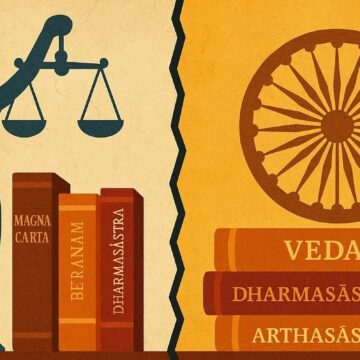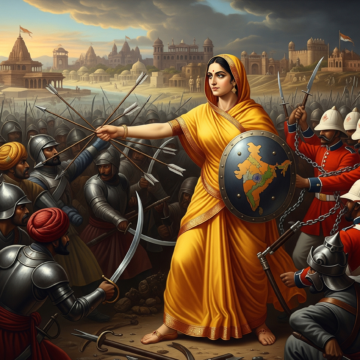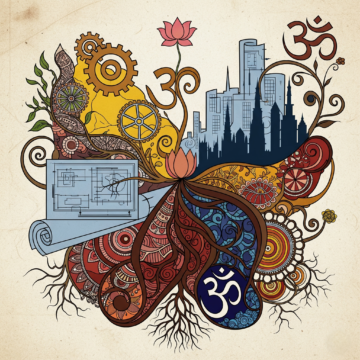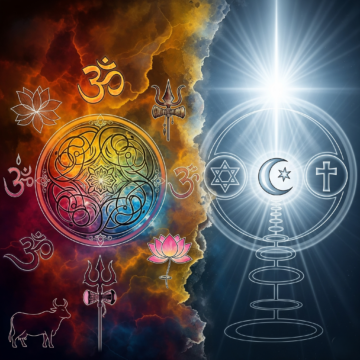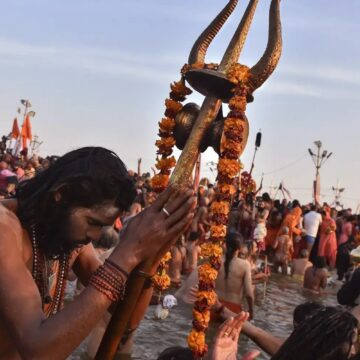This essay by Garikapati Pavan Kumar explores the Vedic and Upaniṣadic foundations of Yoga, tracing its disciplined trajectory through the four pādas of the Yoga Sūtras and culminating in the realization of svarūpa and kaivalya. It is written with a commitment to śāstric clarity, and philosophical depth.
Category: <span>PERSPECTIVE</span>
Khan Abdul Ghaffar Khan: Liberal or fanatic?
Was Khan Abdul Ghaffar Khan truly the “Frontier Gandhi”, a liberal humanist wronged by history, or a devout fanatic disguised in Gandhian robes? This essay revisits that question through forgotten records, overlooked testimonies, and Sita Ram Goel’s sharp insights. From Pashto pride to Pakistan’s politics, the story unravels a man far more complex and perhaps less idealistic than the hagiographies suggest.
Justice Beyond Colonial Laws: The Case for Dharmic Judiciary
India’s judicial system, still anchored in colonial frameworks, often appears disconnected from the spirit of Dharma when adjudicating on matters of faith, family, and tradition. Judges with little understanding of Hindu philosophy or scriptures frequently issue rulings on matters of Dharma. From casual remarks on our deities to misguided interpretations of temple customs, such decisions reveal a deep cultural disconnect. It’s time to restore balance by establishing Dharmic courts, grounded in our own civilizational wisdom and moral vision, to decide on matters of Dharma, culture and family.
Dharma, Defense, and the Forgotten Art of Shatrubodh
A cobra once promised a Sadhu never to bite, only to be beaten by villagers who mistook its restraint for weakness. The Sadhu reminded it: “I asked you not to bite, but did I ask you not to hiss?” The parable mirrors Hindu society’s larger civilizational problem of mistaking non-violence for inaction in the face of aggression. True Ahimsa was never about surrender — it was resistance rooted in Dharma, with Shatrubodh (enemy-awareness) as its guiding strength.
That! Who or What is Worth Worshipping?
In post-Christian Europe, many no longer subscribe to traditional theology or atheism, instead calling themselves “Something-ists” or “spiritual but not religious.” This vague belief in “Something” echoes ancient Indian thought, where the Vedic word Tad—“That”—points to the Absolute beyond description. Found in the Ṛg-Veda, Upaniṣads, and Bhagavad Gītā, Tad represents the witness-consciousness, the essence beyond qualities. The clearest enunciation of Tad, at once one of the profoundest Vedic phrases is the assurance Tat tvam asi, “that thou art” in the Chāndogya Upaniṣad. Thus, what seems modern is rooted in one of humanity’s oldest insights into the ultimate reality.
Dharma and Development : A Civilizational Balance
When development is not rooted in culture, a nation is reduced to just a geographical landmass. Development and culture are not mutually exclusive in the Indian civilizational context. Sanatana Dharma doesn’t ask us to choose between development and devotion to faith — it asks us to integrate them. Its Purushartha framework enables human fulfillment in every aspect of life, with Dharma as the guiding principle. From the Ram Mandir to the Kumbh Mela, what critics dismiss as distractions are often engines of economy, culture, identity, and belonging.
Secularism in India – Rooted in Sanatana Dharma
India's secularism is grounded in the civilizational ethos of Sanatana Dharma and emphasizes mutual respect over strict separation of state and religion. Sanatana Dharma doesn’t just preach tolerance and inclusivity; it embodies it. Unlike Western secularism, which arose from religious conflict, India’s approach fosters coexistence. India's secularism is not just political, it is civilizational.
The Limits of Equality: A Dharmic Appraisal of Modern Political Theology
Modernity universalizes Enlightenment ideals of equality, recasting Dharmic order as moral failure. But in Dharma, justice lies not in sameness, but in harmony—each being acting in accordance with its Svabhāva and Svadharma. The caste system, far from being a hierarchy of worth, was a framework of reciprocal duty, now misunderstood and maligned through colonial and liberal lenses. True reform lies not in dismantling tradition, but in reclaiming its wisdom with renewed understanding.
The Ghent School : Promoting a Better Understanding of India
The Ghent School, led by Prof. Balagangadhara, challenges colonial narratives that have shaped India's understanding of religion, caste, and culture. It argues that India's traditions differ fundamentally from Western religious frameworks, emphasizing rituals over doctrinal beliefs. The school advocates for decolonizing Indian social sciences by rediscovering indigenous perspectives and rejecting imposed categorizations. By understanding India's traditions on their own terms, it proposes a more nuanced approach to multiculturalism and identity.
A Scientific Perspective on Mahakumbh
At the Triveni Sangam in Prayagraj, where the Ganga, Yamuna, and the mystical Saraswati converge, the Kumbh Mela unfolds as a grand experiment in collective consciousness. This ancient gathering, rooted in Hindu lore, integrates sophisticated scientific principles, from astronomical cycles to fluid dynamics. The 2025 Mahakumbh Mela exemplifies this blend, with AI-powered crowd management and real-time navigation tools enhancing the experience for millions of pilgrims. This convergence of science and spirituality not only preserves cultural heritage but also fosters a sense of unity and shared purpose, inviting both spiritual seekers and scientific minds to explore its depths.



